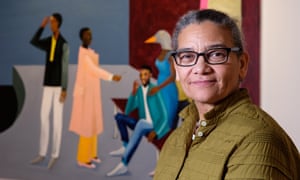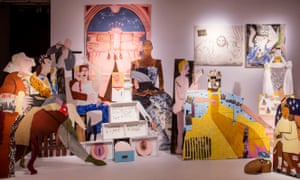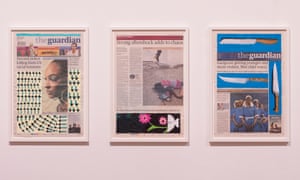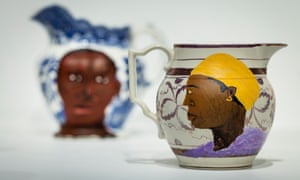Jay Doubleyou: turner prize won by duncan campbell
This year's winner has just been announced:
Lubaina Himid becomes oldest artist to win Turner Prize... | Daily Mail Online
Lubaina Himid first black female Turner Prize winner | Daily Mail Online
Lubaina Himid is bright-eyed and ferociously on the ball the morning after winning the Turner prize. Perhaps one advantage of being the oldest-ever winner, as the headlines baldly put it (she is 63), is the ability to receive the award with immense, mature poise. As the £25,000 cheque was presented in Hull Minster on Tuesday evening, the Preston-based artist thanked, among others, the art historians who had supported her work “during the wilderness years”; “my mother, for letting me do what I wanted as long as I came home by 10pm”; and “all the people who stopped in the streets of Preston and Hull to wish me luck – it worked”.
Still, she tells me as we talk in the Ferens Gallery, where the Turner-prize exhibition has already received 90,000 visitors as part of Hull’s year as UK city of culture, her victory is “bittersweet. I think to myself what I could have done if I’d won it at 40. That would have been good. But I guess there are more things I’ve got to say now, and it gives me a good opportunity to say them. But there aren’t that many years left. Twenty years in front of you is not the same as 63 years behind you.”
She doesn’t feel “old” though – or didn’t until the news coverage started to emphasise her age, perhaps inevitably, given that this is the first time in many years the prize has been open to artists over 50.
Himid’s room in the exhibition is a riot of colour, drama and joyfully exuberant works that reveal darker – even dangerous – aspects the more you look. There is a stage-set of larger-than-life, cut-out figures based on William Hogarth’s Marriage à La Mode. First exhibited in 1987, it shows Margaret Thatcher and Ronald Reagan locked in a wild flirtation, while hideous figures from the art world look on, the critic sporting at his neck a frill made out of condoms. (“I’ve never had a great relationship with critics,” Himid says.) The two black slave-servants from Hogarth’s original have become giant, serene figures, regarding the scene with baleful dignity. Himid decided to show it again for the exhibition “because I could not believe that we had a female prime minister and a laughable US president in power again”.
Then there is a wall of pages from the Guardian, with which Himid has intervened in one way or another, painting out pictures or text, and adding images here and there. In 2007, as the 200th anniversary of the abolition of the slave trade in the British empire approached, she decided to look in detail at the paper. It had plenty of images of black people in it, she noted – unlike the first time she studied it, in 1983, when she found only one photograph of a black person in a year’s worth of editions.
But, she says, the Guardian “has this extraordinary habit of placing negative texts, about something else entirely, next to images of black people”. Wait, I say, isn’t that to be expected? Papers convey news, after all, much of which is bad. “But the juxtapositions are always to do with either violence, prisons, or theft,” she says. No one in the Guardian, she argues, can possibly be looking at the paper page by page, “as an object”. This enrages her. “I believe in the Guardian in the way that other people stick by their football team, but it makes me really, really angry.”
She is probably right, in that editors do think about balance and pace of stories, about choice of pictures, about avoiding stereotypes and tropes, but they don’t look in the same way Himid does – with an artist’s eye for the whole effect of a page, at how unconnected stories and images, including adverts, bleed into one another.
One of the most striking of her Guardian works shows a front page with an article by Irish novelist Anne Enright about Ugandan midwives, who are photographed in an impressive phalanx, arms clasped in front of them, ready to serve. The headline at the top of the page, however, is about violent crime: “Gangs are getting younger and more violent, Met chief warns.” Hamid blocked out the story associated with that headline, as well as the masthead, and inserted paintings of three long, brutal knives. She left an advert intact at the bottom – for a Caribbean holiday.
I’m still unconvinced, I tell her. The main picture on the page, after all, was of a group of powerfully competent black women, surely a positive image. But she blasts me with further examples. There was a Weekend magazine with the late poet and activist Maya Angelou on its front cover; and on the back, she remembers, was an advert for an insurance company featuring an image of a spade. “People of my generation know ‘spade’ is the same as the word ‘nigger’. I know you need the advert: but could you think twice about putting the word spade next to an image of a black person?”
Then, she says, she would find an image of tennis star Venus Williams, “with the headline ‘Venomous Venus’. Now come on!’” She has an archive, in her house, of 10 years’ worth of such pages. “It’s not so people will give up reading the Guardian. What the hell would we read if we didn’t read the Guardian? We’d be fucked. It’s important we carry on reading, but that Guardian readers are on it – that they think, ‘We see this now.’ That they see this kind of undermining was going into our heads and we didn’t realise it.”
Himid was born in Zanzibar, home to her father’s family. He died from malaria when she was very young, after which her Lancastrian mother, a textile designer, returned to Britain and set up home in Maida Vale in London with her aunt, a teacher who had studied music (both women were hard workers but “had a capacity for wild parties”).
Her aunt made sure she could read at the age of four, but her mother’s teaching came in other ways. One weekend, there would be a trip to the V&A museum, the next to a department store. Himid has written of these 1960s outings, remembering the sensuousness of the museum’s “voluminous floral tapestries, heaving with dancing yearning bodies”, and then the gorgeousness of Liberty, where she would find herself “trailing a finger over fragile milky German crockery, lying down on piles of soft Persian rugs, wanting to unfurl bolts of fabric”.
Later, she yearned to make political theatre that could be encountered by chance – on the street, in public places – and so she studied stage design at Wimbledon School of Art, but found herself learning from deeply traditional men whose gaze was fixed on the ballet or the opera. “I tried to turn every brief into a political statement – it was miserable in a way,” she says. Art gave her a different route: museums are a “continuation of the street”, she says, or should be, “and everything in them belongs to you: every item, every jewel, every painting, every lamp”.
Himid moved to Preston in Lancashire when she was 36. She had to get out of London: she was broke and “art schools were not employing black women to teach in 1990”. She found a happy place to work at what is now the University of Central Lancashire, where she is now professor of contemporary art. She has a strong network of friends and colleagues, many making work away from the limelight or, like her, waiting until late on in their careers to be offered big shows at prominent venues. Younger curators in their 30s and 40s, she says, are beginning to look back on the art they were brought up on and saying: “Hang on, just a minute, something’s missing.”
She plans to spend a bit of the £25,000 to buy some really fancy shoes, but most of it on helping out other artists. There is so much to do, she says, given the enormous gap between the huge public appetite for art and the press’s limited imagination in covering it. She talks about colleagues she would like to see receiving more attention: photographer Ingrid Pollard “who is well thought of by people who know her but hasn’t had a great show in a great place – she makes deep, quiet, beautiful work.” Or Claudette Johnson, who makes “beautiful pastel drawings”. Or Magda Stawarska-Beavan, who has just made a haunting film “about place, belonging, not belonging”. Or Rebecca Chesney, whose environmentally aware work might involve transforming a space into a riot of wildflowers.
Himid’s fondness for drawing the conversation away from herself and towards others is not unlike the joyful, lively invitation of her art. “I want to have a conversation,” she says. “My way of getting conversation going, or getting people to take action, is by drawing them in and saying: ‘You bring your baggage, your opinion, your life and I’ll bring mine – and let’s try to talk about it.’ I don’t see the point, otherwise.”
- The Turner prize exhibition is at Ferens Gallery, Hull, until 7 January.
Turner prize winner Lubaina Himid: 'I have more things to say – this gives me the chance' | Art and design | The Guardian
A cross word: Turner prize winner Lubaina Himid's Guardian headline mashups | Art and design | The Guardian
Turner Prize 2017: Lubaina Himid's win makes history - BBC News
.
.
.





No comments:
Post a Comment